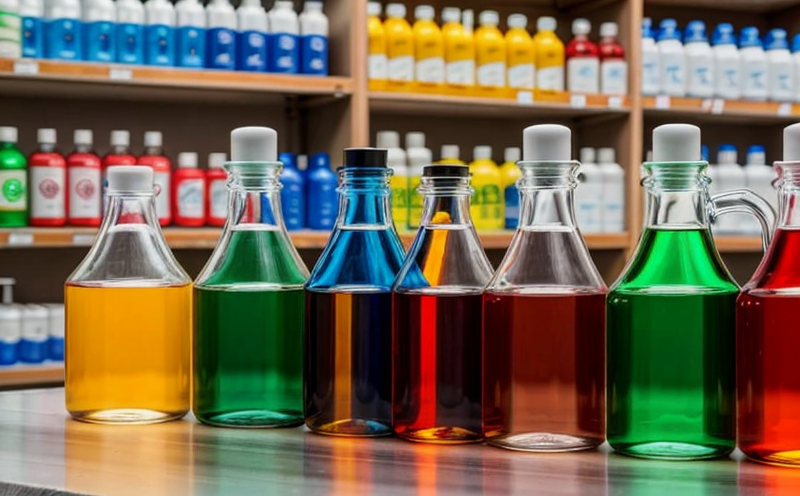EPA 3540 Soxhlet extraction of organic contaminants from fabrics
The EPA Method 3540 is a widely recognized technique for extracting organic contaminants from solid matrices such as fabrics and soil. This method, based on the Soxhlet extraction principle, involves the use of an extractant to dissolve target analytes from the fabric sample. The process ensures thorough extraction by repeatedly passing the solvent through the material in a closed system.
The primary objective of this test is to measure the levels of organic contaminants present in fabrics that are suspected of containing restricted substances. This service is crucial for compliance with international standards and local regulations, ensuring that textile products meet safety and environmental requirements.
One key aspect of EPA 3540 is its use of a Soxhlet extraction apparatus, which consists of a flask connected by a reflux condenser to a thimble containing the fabric sample. The solvent is heated in the flask, vaporized, and then passed through the condenser into the thimble where it extracts contaminants from the material. This process is repeated multiple times, allowing for efficient extraction even at low concentrations.
The choice of extractant plays a crucial role in determining the effectiveness of the method. Common solvents used include dichloromethane and methanol, which are chosen based on their ability to dissolve specific classes of organic compounds without causing degradation or alteration of the analytes. The selection of solvent is also influenced by regulatory requirements and the nature of the contaminants being analyzed.
The extracted organic contaminants are then concentrated in a receiving flask for further analysis using techniques such as gas chromatography (GC) or liquid chromatography (LC). This step ensures that even trace amounts of contaminants can be detected, which is essential for accurate compliance testing. The method's sensitivity allows laboratories to detect and quantify the presence of restricted substances down to parts per million levels.
The EPA 3540 Soxhlet extraction process is particularly suited for the analysis of volatile organic compounds (VOCs) such as benzene, toluene, ethylbenzene, and xylenes. It also facilitates the extraction of semi-volatile organic compounds (SVOCs) like polychlorinated biphenyls (PCBs), polybrominated diphenyl ethers (PBDEs), and other persistent organic pollutants.
The results from this testing method are critical for ensuring that textiles comply with various international standards such as ISO 18027:2016, which specifies the requirements for the extraction of organic substances in textile materials. Compliance with these standards is mandatory in many countries to ensure product safety and environmental protection.
For industries involved in the production and distribution of textiles, this method provides a robust framework for quality control and regulatory compliance. By using EPA 3540 Soxhlet extraction, companies can verify that their products meet stringent safety and environmental standards, thereby protecting public health and the environment.
Scope and Methodology
| Step | Description |
|---|---|
| Sample Preparation | The fabric sample is cut into small, uniform pieces to ensure consistent extraction. The sample size should be approximately 10 grams per gram of solvent used. |
| Solvent Selection | Dichloromethane or methanol is selected based on the target analytes and regulatory requirements. Ensure the solvent is degassed before use to prevent foaming during extraction. |
| Extraction Process | The Soxhlet apparatus is set up with the sample in the thimble, connected to a reflux condenser, and heated. The solvent is allowed to circulate through the system, extracting contaminants from the fabric. |
| Concentration | The extracted solution is concentrated in a receiving flask for further analysis using GC or LC. |
| Analytical Techniques | The concentrated extract is analyzed using either gas chromatography (GC) or liquid chromatography (LC) to identify and quantify the organic contaminants present. |
| Reporting | The results are reported according to the standard format, including the concentration of each detected contaminant. Compliance with international standards is also noted. |
Why Choose This Test
- Precise measurement of organic contaminants at parts per million levels.
- Compliance with international and local regulations for textile safety.
- Robust extraction method suitable for both volatile and semi-volatile compounds.
- Use of reputable laboratory standards such as ISO 18027:2016.
- Efficient use of solvents, reducing waste and costs associated with solvent consumption.
- Highly sensitive detection capabilities ensuring minimal false negatives.
- Supports quality control measures in the textile industry to ensure product safety.
Competitive Advantage and Market Impact
The EPA 3540 Soxhlet extraction method provides a significant competitive advantage by ensuring that textile products meet rigorous regulatory standards. This service is particularly valuable for companies involved in the production of high-quality, environmentally friendly textiles. By using this method, businesses can demonstrate their commitment to sustainability and consumer safety, enhancing brand reputation and customer trust.
The ability to accurately measure organic contaminants at low concentrations allows manufacturers to identify and eliminate potential risks associated with restricted substances early in the production process. This proactive approach not only ensures compliance but also helps companies stay ahead of regulatory changes and market trends. In an increasingly stringent global marketplace, this service can differentiate a company from its competitors by providing a reliable, accurate, and compliant testing solution.
The impact on the market is profound as it sets a benchmark for quality in the textile industry. By offering EPA 3540 Soxhlet extraction services, laboratories contribute to the overall improvement of product safety and environmental protection. This service supports the development of safer and more sustainable textiles, which are in high demand from consumers and regulatory bodies alike.





